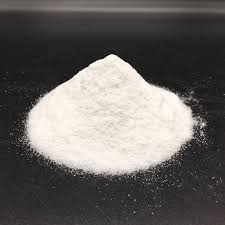Cellulose and Carbon Sequestration: A Deeper Dive
Cellulose, the most abundant organic compound on Earth, is a complex carbohydrate that forms the structural backbone of plant cell walls. It plays a pivotal role in carbon sequestration, the natural process of capturing atmospheric CO₂ and storing it long-term to combat climate change. Plants produce cellulose through photosynthesis, locking carbon into their biomass and offering a renewable, scalable way to reduce greenhouse gases. Let’s explore this relationship in detail, covering how it works, its applications, and its potential to shape a sustainable future.
1. How Cellulose Locks Away Carbon
- Photosynthesis in Action: Plants absorb CO₂ from the air and use sunlight to convert it into glucose (C₆H₁₂O₆) during photosynthesis. This glucose is then assembled into cellulose (C₆H₁₀O₅)ₙ, a sturdy polymer that gives plants their rigidity. Each cellulose molecule contains carbon atoms originally pulled from atmospheric CO₂.
- Storage Mechanism: By building cellulose, plants effectively remove CO₂ from the atmosphere and store it in their stems, leaves, and roots. For example, a single tree can sequester hundreds of kilograms of carbon over its lifetime, much of it in the form of cellulose.
2. Cellulose Across Plant Types
- Woody Plants: Trees, with their high cellulose content in wood (up to 40-50%), are powerhouse carbon sinks. A mature oak or pine can store carbon for decades or centuries, making forests critical for long-term sequestration.
- Grasses and Crops: While grasses and annual crops have less cellulose per plant, their rapid growth and vast coverage (e.g., in prairies or farmland) allow them to contribute significantly to carbon storage, especially in soil.
- Special Cases: Fast-growing plants like bamboo or eucalyptus can sequester carbon quickly due to their high cellulose production rates, offering potential for targeted climate strategies.
3. What Happens When Plants Die?
- Decomposition: When plants die, microorganisms break down cellulose, releasing CO₂ back into the atmosphere. This is part of the natural carbon cycle, but the speed of decomposition matters. In dry or cold climates, this process is slower, keeping carbon locked away longer.
- Long-Term Storage: In unique environments like peat bogs or permafrost, decomposition is drastically slowed, trapping carbon in dead plant matter for thousands of years. Peatlands alone store more carbon than all the world’s forests combined!
- Soil Enrichment: Partially decomposed cellulose adds to soil organic matter, creating a stable carbon pool that can persist for decades or centuries.
4. Cellulose in Everyday Products
- Timber and Paper: When trees are harvested for wood or paper, the carbon in their cellulose remains stored as long as the product lasts. A wooden house or a bookshelf can keep carbon locked away for generations.
- Recycling Benefits: Reusing paper or repurposing wood extends this storage period. Each recycling loop delays the carbon’s return to the atmosphere, amplifying the sequestration effect.
5. Cellulose as a Renewable Fuel
- Biofuels: Cellulose can be converted into biofuels like ethanol through processes that break down plant material. When burned, these fuels release CO₂, but it’s carbon that was recently captured by growing plants—not ancient carbon from fossil fuels.
- Carbon Neutrality: This creates a near-closed carbon loop, making cellulose-based biofuels a cleaner energy option. Innovations in cellulosic ethanol production are expanding their viability as a sustainable fuel source.
6. Boosting Sequestration with Smart Practices
- Reforestation: Planting trees in degraded areas rebuilds cellulose-rich forests, pulling CO₂ out of the air. A single hectare of new forest can sequester tons of carbon annually.
- Agroforestry: Combining trees with crops or livestock increases cellulose in agricultural systems, enhancing both carbon storage and soil health.
- Cover Crops: Growing plants like clover or rye between harvests keeps cellulose production active year-round, trapping more carbon in biomass and soil.
7. Challenges to Watch
- Deforestation: Cutting down forests for agriculture or urban development releases stored carbon as cellulose is burned or decays. Globally, deforestation accounts for about 10% of CO₂ emissions.
- Climate Risks: Warming temperatures can speed up decomposition or fuel wildfires, releasing carbon from cellulose back into the air. Protecting ecosystems from these threats is essential.
Why This Matters
Cellulose isn’t just a plant component—it’s a natural tool for fighting climate change. By storing carbon in forests, soils, products, and even renewable fuels, it offers a multi-pronged approach to reducing atmospheric CO₂. Sustainable practices that increase cellulose production, like reforestation or recycling, can amplify these benefits, while preserving existing carbon sinks prevents losses. It’s a simple yet powerful piece of the climate puzzle.

